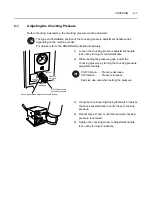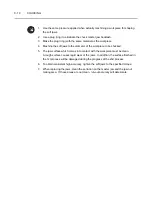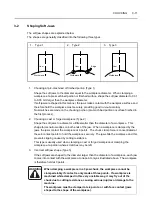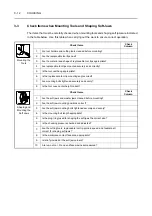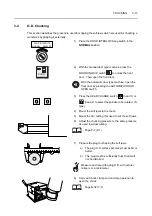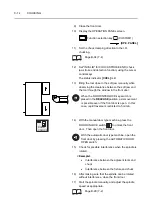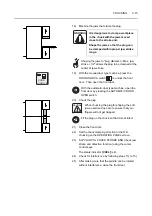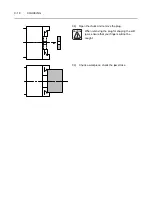
CHUCKING C-3
WARNING
9.
When mounting or removing the chuck, use eye bolts and a lifting
belt, and lift the chuck using a crane. After mounting or removing
the chuck, be sure to remove the eye bolts and lifting belt from the
chuck. If the spindle is rotated with the eye bolts and/or lifting belt
attached to the chuck, they could catch on the operator and entangle
him in the chuck, or they could fly out, causing serious injuries or
damage to the machine.
For the procedure used to mount the chuck, refer to the instruction
manuals prepared by the chuck and cylinder manufacturers.
10.
Use only the specified bolts to mount the chuck and chuck jaws and
tighten them to the specified torque. Check at regular intervals that
the bolts are securely tightened. If the bolts are not tightened to the
specified torque the workpiece might fly out, causing serious
injuries or damage to the machine, and the chuck could be damaged.
11.
When machining long workpieces, always hold the free end of the
workpiece securely with the tailstock (if featured), a steady rest (if
featured), or a bar feeder (if featured). If you do not support the free
end the workpiece could bend or shake while the spindle is rotating,
causing accidents involving serious injuries or damage to the
machine.
12.
When clamping or unclamping a workpiece in the chuck, ensure that
your hands will not be trapped by the workpiece, soft jaws, or
tailstock (if featured). If you work without sufficient care you could
be seriously injured.
13.
Periodically disassemble and clean the chuck. Apply grease to the
chuck every day. If chips or coolant enter the chuck, or if the grease
runs out, the chuck gripping force will be reduced. If the spindle is
rotated in this condition the workpiece will fly out, causing serious
injuries or damage to the machine.
14.
Clean out any chips that accumulate inside the chuck.
Accumulation of chips inside the chuck reduces the gripping force
and shortens the jaw stroke. If machining is carried out under such
conditions the workpiece will fly out, causing serious injuries or
damage to the machine.
15.
Since forged and cast workpieces have hard chucking portions due
to scale, use hard jaws for these workpieces. If the chucking contact
has to be a point or line contact, for example when clamping on the
draft of a casting, use spikes embedded in the jaws. If three soft
jaws are used, shape them so that the workpiece is clamped at six
points; avoid face contact between the jaws and workpieces with
scale on them.
If machining is carried out while the workpiece is clamped in very
unstable way the workpiece will fly out, causing serious injuries or
damage to the machine.



















